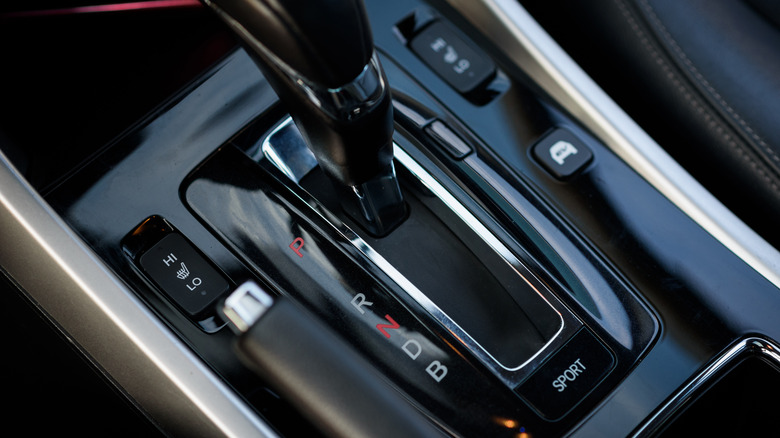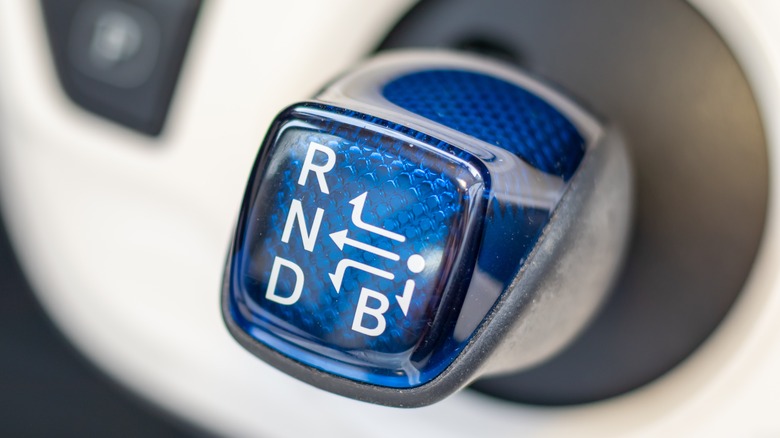
Serhii Sobolevskyi/Getty Images
Not all automatic transmissions are the same. Modern cars could have a standard, dual-clutch, or CVT automatic transmission, but their gear levers would most likely share the standard P, R, N, D, and L shift modes.
Advertisement
For the uninitiated, P is for Park and locking the transmission so the vehicle won’t move; R is for Reverse; N is for Neutral, disconnecting the gearbox with the engine; D is for Drive and moving forward, and L is for Low gear which limits the transmission to either the first or second gear.
However, certain automatic-equipped vehicles have a few uncommon letters or numbers on the gear shifter. For instance, some cars have the numbers 1 and 2 or the S, M, E, and B letters to go along with the usual P-R-N-D sequence.
The 1 and 2 are similar to L or Low and limit the transmission into the first or second gear, which is excellent when climbing steep embankments or towing in slippery terrain. In most cars, the S is for Sport and enables the gearbox to stay at a higher RPM when driving aggressively.
Advertisement
In addition, M stands for Manual and allows the driver to manually select gears by tapping the shift lever, pushing buttons, or pulling on the flappy paddles behind the steering wheel. E is for Economy and enables early gear changes to conserve gas.
What does B do in an automatic transmission?

Alexandra Morosanu/Shutterstock
One of the most uncommon shift modes in an automatic transmission is B, which stands for Brake. If the gear shift is in the B position, the transmission will behave similarly to when it’s in 1, 2, or Low. It will prioritize power over speed. Moreover, it prevents the gearbox from selecting a higher gear and utilizes more engine braking for improved control and traction.
Advertisement
If your vehicle has a B position in the gear shifter, use it when coasting downhill to save your mechanical brakes from overheating. On the contrary, shifting to B is ideal for climbing inclines, towing heavier loads, or traversing slippery roads or looser terrain. The B position in your automatic transmission would also help maintain traction in snowy weather – especially when moving from a stop – by helping prevent wheel slip and providing more power and grip.
In most driving scenarios, you probably won’t need to shift to B, L, or any number since keeping the gear lever in D or Drive is suitable. Then again, it helps to know what those unusual letters or numbers in an automatic transmission could do to make the most of your car’s abilities in changing weather or driving conditions.
Advertisement